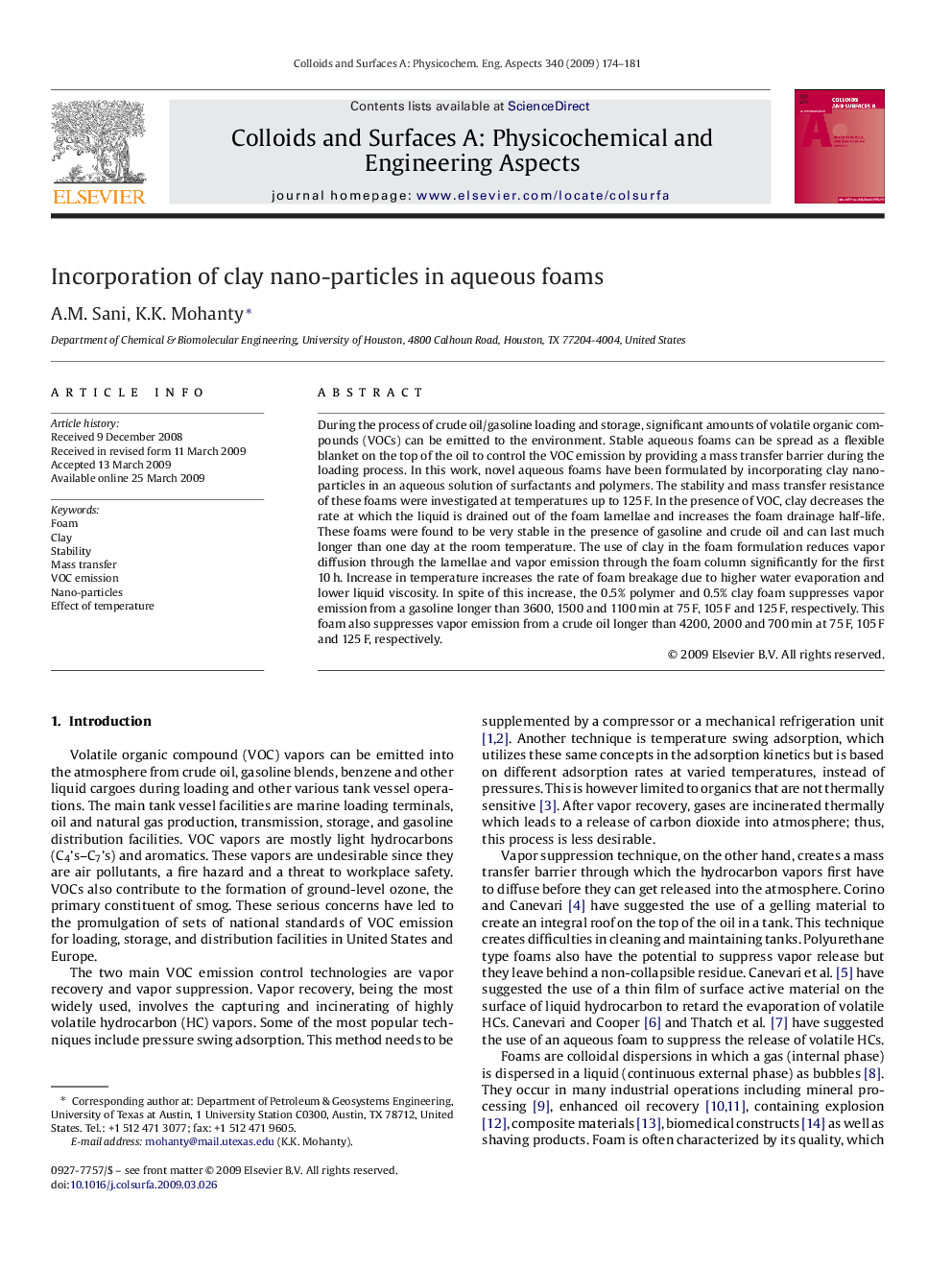| Article ID | Journal | Published Year | Pages | File Type |
|---|---|---|---|---|
| 596021 | Colloids and Surfaces A: Physicochemical and Engineering Aspects | 2009 | 8 Pages |
Abstract
During the process of crude oil/gasoline loading and storage, significant amounts of volatile organic compounds (VOCs) can be emitted to the environment. Stable aqueous foams can be spread as a flexible blanket on the top of the oil to control the VOC emission by providing a mass transfer barrier during the loading process. In this work, novel aqueous foams have been formulated by incorporating clay nano-particles in an aqueous solution of surfactants and polymers. The stability and mass transfer resistance of these foams were investigated at temperatures up to 125Â F. In the presence of VOC, clay decreases the rate at which the liquid is drained out of the foam lamellae and increases the foam drainage half-life. These foams were found to be very stable in the presence of gasoline and crude oil and can last much longer than one day at the room temperature. The use of clay in the foam formulation reduces vapor diffusion through the lamellae and vapor emission through the foam column significantly for the first 10Â h. Increase in temperature increases the rate of foam breakage due to higher water evaporation and lower liquid viscosity. In spite of this increase, the 0.5% polymer and 0.5% clay foam suppresses vapor emission from a gasoline longer than 3600, 1500 and 1100Â min at 75Â F, 105Â F and 125Â F, respectively. This foam also suppresses vapor emission from a crude oil longer than 4200, 2000 and 700Â min at 75Â F, 105Â F and 125Â F, respectively.
Related Topics
Physical Sciences and Engineering
Chemical Engineering
Colloid and Surface Chemistry
Authors
A.M. Sani, K.K. Mohanty,
